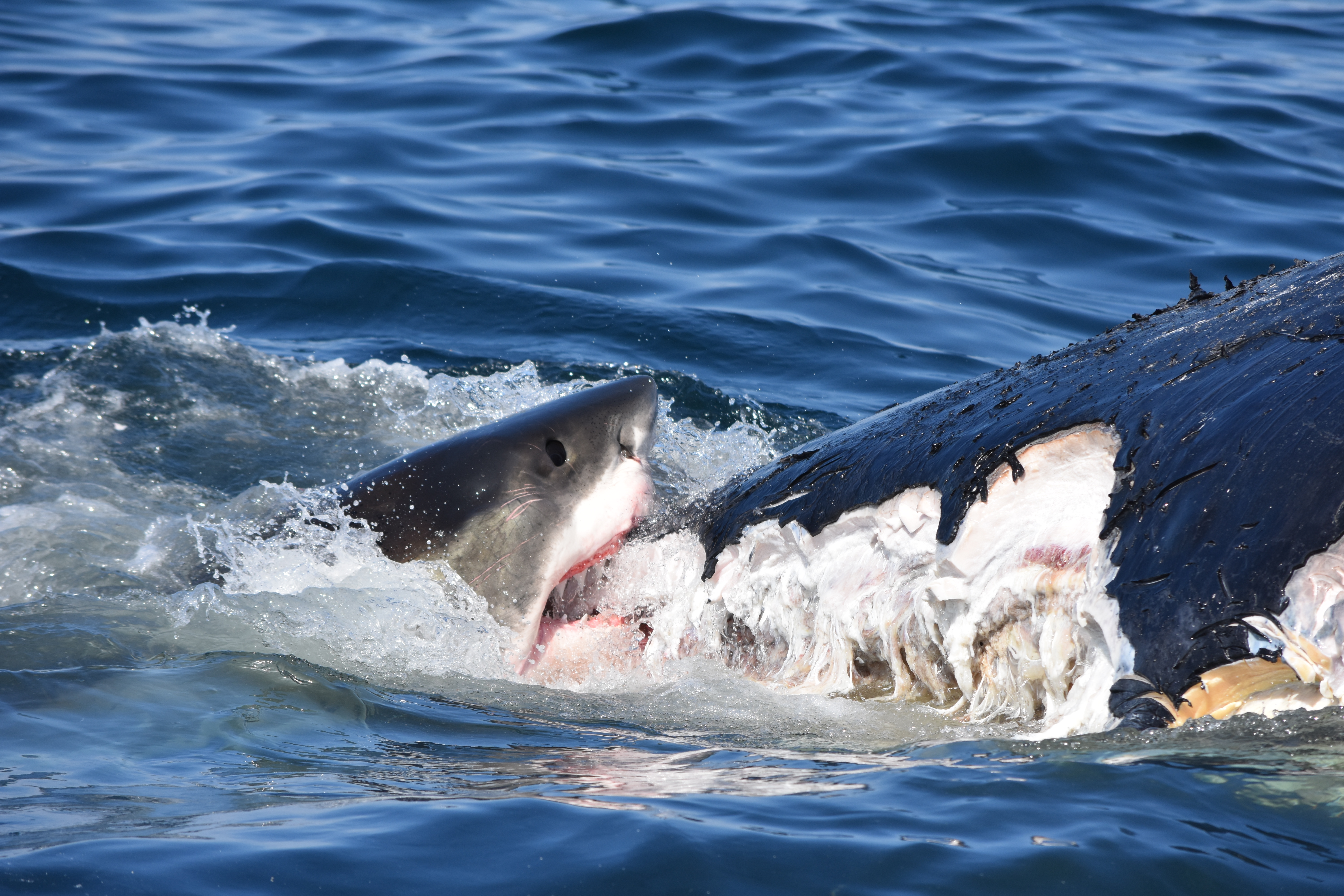'Unimaginable' video shows great white sharks ripping humpback whale carcass to shreds
The year-old whale calf's remains will feed sea creatures for years to come.
In mid-August, a team of Massachusetts-based marine biologists set out on the waters of Stellwagen Bank National Marine Sanctuary, just east of Boston. Their mission: to tag some basking sharks — the second-biggest shark species on Earth, and a predator still considered highly mysterious to scientists. But soon after the team hit open water, another marine mammoth caught their attention: A young humpback whale, floating dead on the ocean's surface.
Then, the sharks came.
"Eight or more great white sharks had found the carcass," and were tearing its blubber to bits, David Wiley, a research ecologist at Stellwagen Bank, told Live Science.
It was an "unimaginable" spectacle, Wiley said, crowned with thousands of hungry seabirds swooping down to snatch bits of whale tissue out of the bloody water — and you can see the havoc for yourself in a new video (above) by Stellwagen Bank and the National Oceanic and Atmospheric Administration (NOAA).
"It was nature in action," Wiley said. "Everything dies for something else to consume. Nothing goes to waste."
Humpback whales, which can grow to be about the size of a school bus, roam all over the world, and are frequently seen at high-latitude feeding grounds like Stellwagen Bank in summertime. Unfortunately, that can put them in the path of large boats and fishing nets — the two main threats facing humpbacks in the wild, Wiley said. One of those threats is likely the cause of death here.
One of the biologists at the scene in Stellwagen looked at the fingerprint-like pattern under the dead humpback's fluke (or tail fin), and identified it as the 1-year-old calf of a known mother whale named Venom. (Wiley could not say whether the mother's name was a Spider-Man reference). Given the dead whale's young age, it's likely that the calf fell victim to some sort of human interaction, Wiley said. However, by the time the researchers arrived, the body had been so badly chewed up by sharks it was impossible to find any clear indications of what had killed it.
Get the world’s most fascinating discoveries delivered straight to your inbox.
While the sight of the dead calf was a somber one, the researcher also knew that the ensuing feeding frenzy was an extremely uncommon sight, and a rare chance to see great whites at the top of the water. The team took the opportunity to tag five of the feasting sharks with special acoustic sensors, which will help NOAA scientists track the movement and behavior of the enigmatic predators as they cruise around Stellwagen, and eventually south to their wintering grounds.
The whale, meanwhile, may still play a major role in revealing the secret lives of the sanctuary's underwater residents.
"As soon as the sharks eat away the blubber, the carcass will become negatively buoyant and drop," Wiley said. "Whale falls can feed hundreds of animals for years to come."
The researchers were unable to tag the whale before it fell, and the carcass is likely at the bottom of the sea by now, Wiley said, so it will take some searching to locate the body's final resting place. But if researchers can find it, this will be the first whale fall ever seen at Stellwagen Bank, Wiley said. Studying it could reveal multitudes about the ecology of the area — and give the deceased calf of Venom a scientific legacy that few whales can claim.
Originally published on Live Science.

Brandon is the space / physics editor at Live Science. With more than 20 years of editorial experience, his writing has appeared in The Washington Post, Reader's Digest, CBS.com, the Richard Dawkins Foundation website and other outlets. He holds a bachelor's degree in creative writing from the University of Arizona, with minors in journalism and media arts. His interests include black holes, asteroids and comets, and the search for extraterrestrial life.



